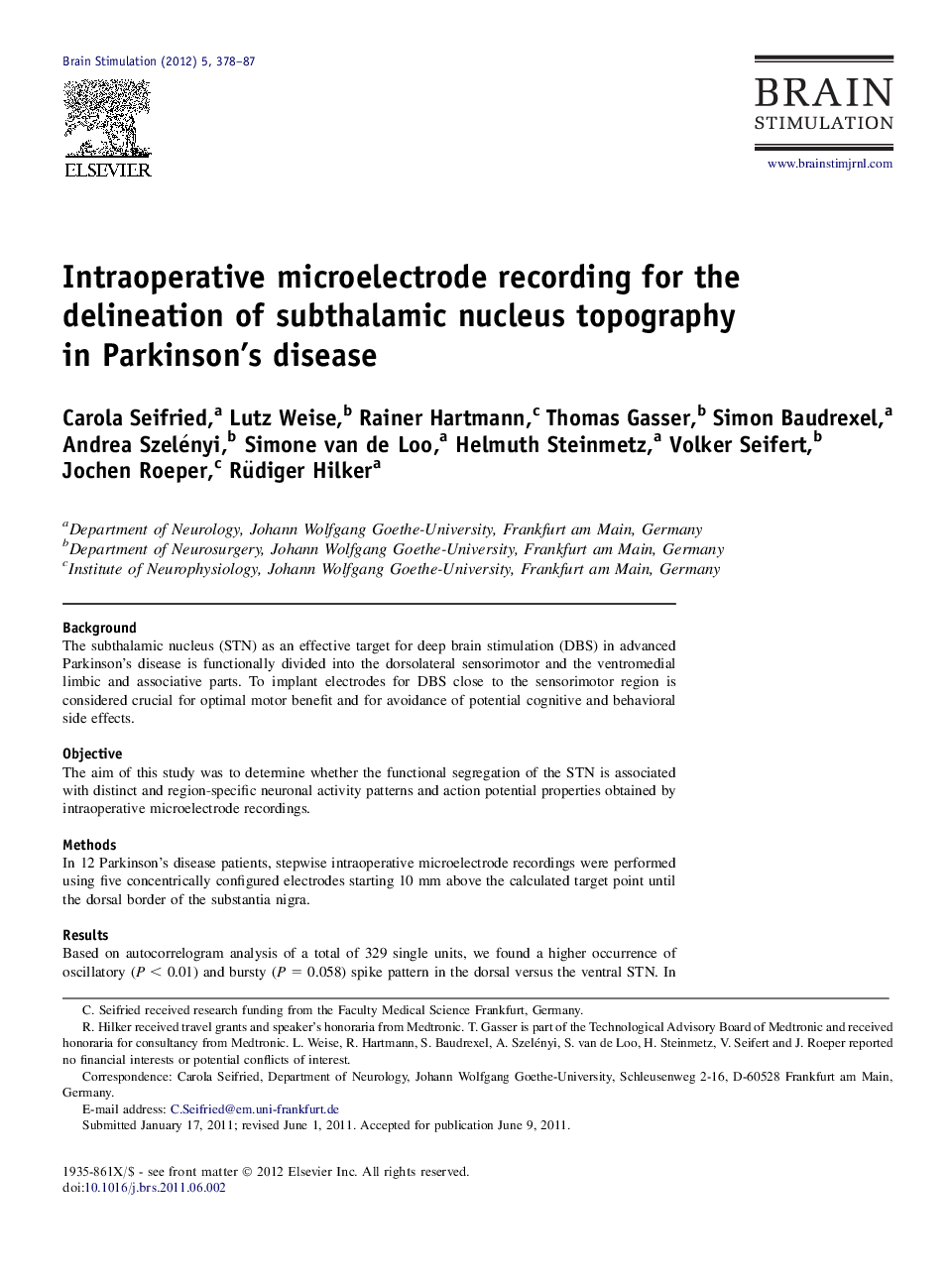| کد مقاله | کد نشریه | سال انتشار | مقاله انگلیسی | نسخه تمام متن |
|---|---|---|---|---|
| 3039116 | 1184687 | 2012 | 10 صفحه PDF | دانلود رایگان |

BackgroundThe subthalamic nucleus (STN) as an effective target for deep brain stimulation (DBS) in advanced Parkinson’s disease is functionally divided into the dorsolateral sensorimotor and the ventromedial limbic and associative parts. To implant electrodes for DBS close to the sensorimotor region is considered crucial for optimal motor benefit and for avoidance of potential cognitive and behavioral side effects.ObjectiveThe aim of this study was to determine whether the functional segregation of the STN is associated with distinct and region-specific neuronal activity patterns and action potential properties obtained by intraoperative microelectrode recordings.MethodsIn 12 Parkinson's disease patients, stepwise intraoperative microelectrode recordings were performed using five concentrically configured electrodes starting 10 mm above the calculated target point until the dorsal border of the substantia nigra.ResultsBased on autocorrelogram analysis of a total of 329 single units, we found a higher occurrence of oscillatory (P < 0.01) and bursty (P = 0.058) spike pattern in the dorsal versus the ventral STN. In contrast the ventral region was characterized by irregular firing neurons (P < 0.01). There were no significant differences in firing frequency, coefficient of variance, asymmetry index as well as spike form, duration, and amplitude.ConclusionsAmong all parameters analyzed in the study, spike pattern is the only convenient electrophysiologic parameter for the differentiation of STN subregions in patients with Parkinson’s disease. The autocorrelogram-based analysis of spike activity seems to be of certain value for the delineation of the dorsolateral STN and might therefore facilitate the precise electrode implantation for DBS.
Journal: Brain Stimulation - Volume 5, Issue 3, July 2012, Pages 378–387